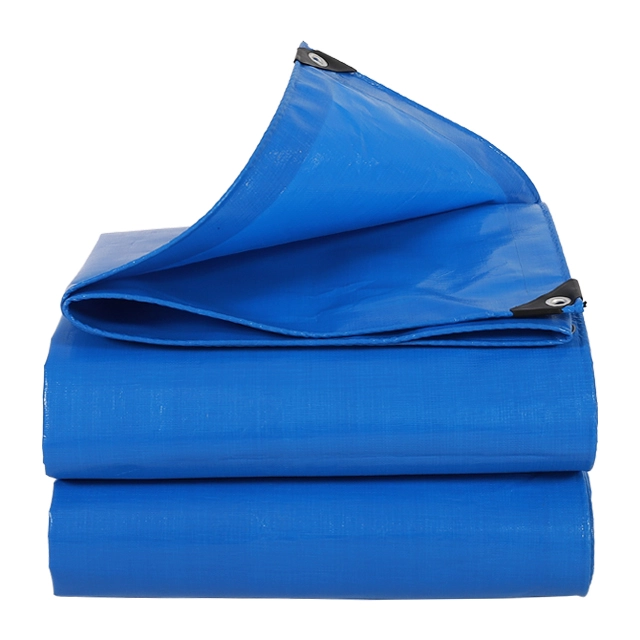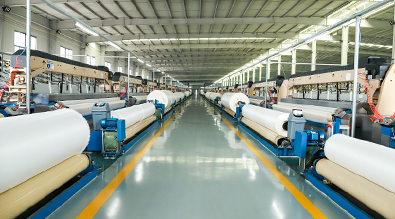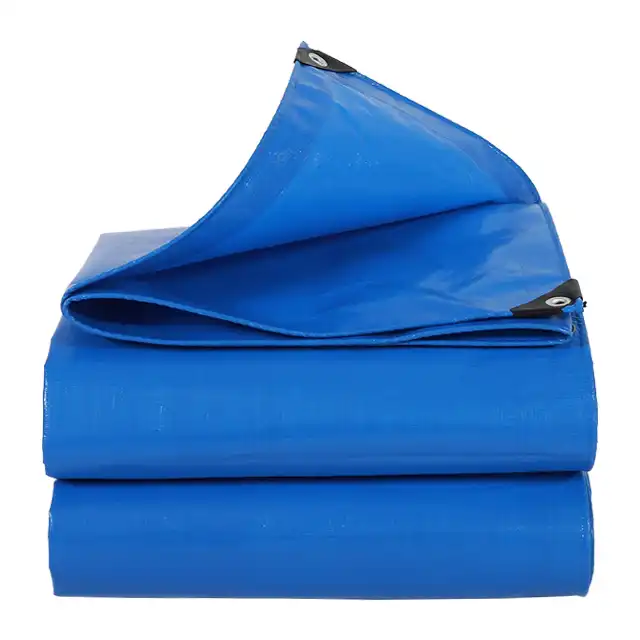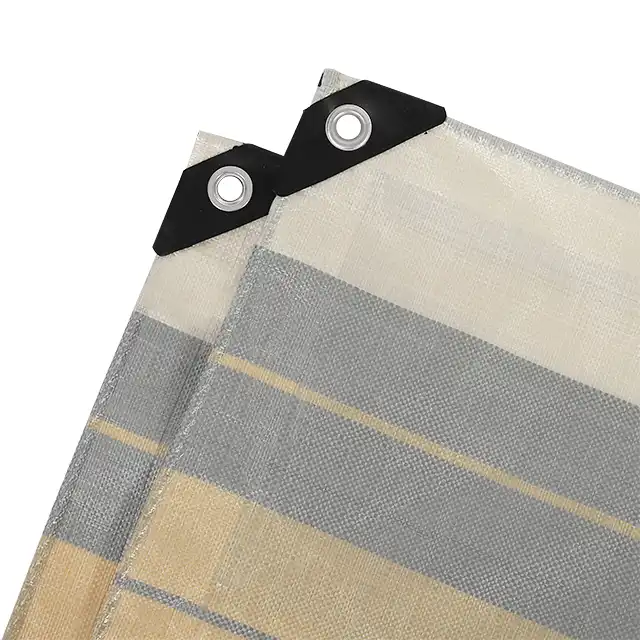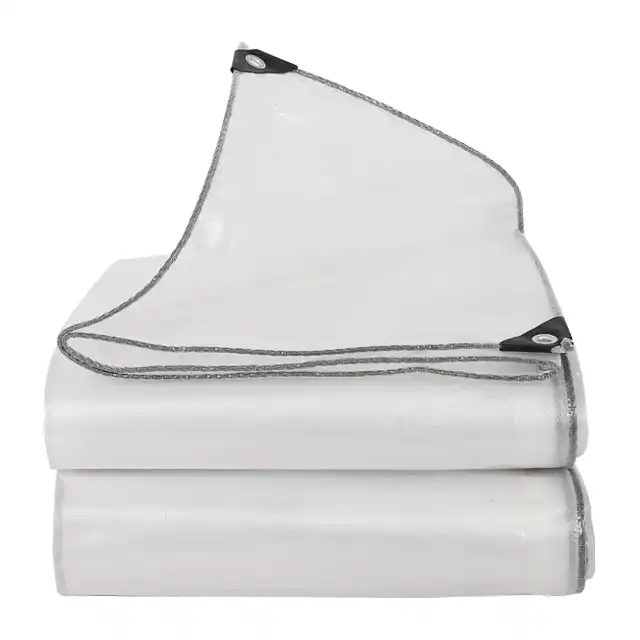How to Cover Hay Bales with Tarps for Maximum Protection?
Protecting hay bales from environmental elements is crucial for maintaining feed quality and preserving your agricultural investment. Specialized hay tarps are indispensable tools for any agriculturalist looking to protect their precious crops, preventing the formation of rot and moisture while keeping nutrients intact. The proper use of high-quality hay tarps can significantly extend the lifespan of your hay bales while maintaining their nutritional value. Understanding the correct techniques for covering hay bales with tarps ensures maximum protection against weather damage, UV degradation, and moisture infiltration. This comprehensive guide will provide you with expert knowledge on selecting, installing, and maintaining protective covering systems that can prevent up to 50% loss in feed quality, ultimately safeguarding your valuable agricultural investment.
Understanding the Critical Role of Hay Tarps in Feed Preservation

Material Selection and Tarp Specifications
The foundation of effective hay bale protection begins with selecting the appropriate tarp materials and specifications. High-density polyethylene (HDPE) woven fabrics combined with low-density polyethylene (LDPE) coating provide superior protection for agricultural applications. Professional-grade hay tarps typically feature weights ranging from 180gsm to 250gsm, offering optimal durability while maintaining manageable handling characteristics. The polyethylene structure enables these protective covers to demonstrate exceptional mildew resistance, tear strength, and chemical resistance properties. Unlike traditional canvas materials, modern PE tarpaulins maintain arctic flexibility, allowing them to withstand freezing temperatures without hardening or cracking. The waterproof coating ensures complete moisture protection, while UV treatment levels between 1% to 7% provide essential sun protection that prevents nutrient degradation. Quality hay tarps incorporate reinforced edges and strategically placed grommets to facilitate secure anchoring systems. The mesh count specifications, typically ranging from 10x10 to 18x18, determine the fabric's strength and durability characteristics. Thickness measurements between 7 to 12 mil provide the necessary barrier protection while maintaining cost-effectiveness. These technical specifications directly impact the tarp's performance in protecting hay bales from environmental threats and ensuring long-term feed preservation.
Weather Resistance and Environmental Protection Features
Weather resistance capabilities represent the most critical aspect of hay tarp performance in agricultural environments. Professional hay tarps demonstrate exceptional resistance to ultraviolet radiation, preventing the degradation of both the protective cover and the underlying feed materials. The anti-corrosion properties ensure longevity even when exposed to acid rain and chemical fertilizers commonly present in agricultural settings. Shrink-proof construction maintains dimensional stability across varying temperature ranges, preventing gaps that could allow moisture infiltration. The waterproof barrier technology creates an impermeable shield against precipitation while allowing proper ventilation through strategically designed breathability features. Temperature resistance spans from extreme cold to high heat conditions, ensuring year-round protection effectiveness. Wind resistance characteristics prevent billowing and tearing during severe weather events, maintaining protective integrity when it's needed most. The anti-freezing properties ensure that tarps remain pliable and manageable even in sub-zero temperatures, facilitating installation and adjustment procedures during winter months. High-quality hay tarps incorporate tear-resistant construction that withstands mechanical stress from handling, installation, and environmental forces. These comprehensive weather protection features work synergistically to create a protective environment that preserves hay quality throughout extended storage periods.
Proper Sizing and Coverage Calculations
Accurate sizing and coverage calculations are fundamental to achieving optimal protection for hay bale storage systems. Professional installation requires precise measurements that account for bale dimensions, stacking configurations, and environmental exposure factors. Standard round bales measuring 4 to 6 feet in diameter require tarps with sufficient overhang to ensure complete coverage and proper drainage characteristics. Square bales arranged in rows demand coverage calculations that accommodate both width and length requirements while providing adequate edge protection. The overlap specifications must account for wind uplift forces and settling that occurs as hay bales compress over time. Proper coverage extends beyond mere dimensional matching to include strategic positioning that promotes water runoff and prevents pooling on tarp surfaces. Professional installations incorporate slope considerations that direct moisture away from bales while maintaining structural integrity of the protective system. Custom sizing options allow for specific field configurations and storage arrangements that maximize space utilization while ensuring comprehensive protection. Roll width capabilities up to 5.1 meters accommodate large-scale operations without requiring multiple tarp sections that could create vulnerability points. Sheet size customization enables precise fitting for unique storage configurations, eliminating waste while ensuring complete coverage. These careful sizing considerations directly impact the effectiveness of the protective system and the longevity of both the tarps and the protected hay bales.
Professional Installation Techniques for Maximum Effectiveness
Foundation Preparation and Site Assessment
Effective hay tarp installation begins with comprehensive site preparation and thorough assessment of environmental conditions. The foundation area must be properly graded to promote drainage and prevent water accumulation beneath hay bale storage areas. Site elevation considerations ensure that water flows away from the storage location, preventing moisture-related deterioration of feed materials. Ground preparation includes removal of debris, rocks, and vegetation that could puncture or damage protective covers during installation or settlement. Proper spacing between bale rows allows for adequate air circulation while facilitating installation and maintenance procedures. Professional site assessment identifies potential wind patterns and exposure risks that influence tarp positioning and anchoring strategies. Drainage infrastructure, including ditches or berms, prevents water infiltration from surrounding areas during heavy precipitation events. The foundation stability assessment ensures that settling or shifting won't compromise the protective system's integrity over time. Access route planning facilitates efficient installation and future maintenance while minimizing damage to surrounding areas. Environmental factors such as prevailing wind directions, seasonal weather patterns, and temperature variations inform installation decisions that maximize long-term effectiveness. These foundational considerations establish the groundwork for successful hay protection systems that deliver reliable performance throughout the storage period.
Advanced Securing and Anchoring Systems
Professional anchoring systems represent the critical component that ensures hay tarps remain securely positioned during adverse weather conditions. The proven approach involves securing tarp corners first, then implementing a cross-tie pattern to distribute wind load evenly across the fabric, with guy lines positioned at 45-degree angles from tarp to ground. Heavy-duty grommets spaced at optimal intervals provide multiple anchor points that distribute stress loads and prevent tearing under wind pressure. Rope selection criteria include diameter, material composition, and stretch characteristics that complement the tarp's performance properties. Anchor point selection considers soil conditions, load requirements, and accessibility for adjustment and maintenance procedures. Ground anchor systems, including spiral stakes, concrete blocks, and deadman anchors, provide secure attachment points for various soil conditions. Tensioning techniques maintain proper tarp position while allowing for thermal expansion and contraction cycles. Advanced securing systems incorporate shock absorption mechanisms that prevent sudden stress loads from damaging tarp materials. Professional installations utilize specialized hardware including cinch devices, tensioning systems, and quick-release mechanisms that facilitate efficient adjustment and removal procedures. The anchoring pattern design distributes forces uniformly across the tarp surface, preventing stress concentration that could lead to premature failure.
Ventilation and Air Circulation Management
Proper ventilation management balances moisture protection with essential air circulation requirements for hay preservation. Breathable tarp technologies allow moisture vapor transmission while preventing liquid water infiltration, maintaining optimal storage conditions. Strategic positioning of ventilation openings prevents condensation accumulation that could promote mold and bacterial growth in stored hay. Air circulation patterns underneath tarps prevent stagnant conditions that contribute to spoilage and quality deterioration. Professional installation techniques incorporate ventilation channels that promote natural air movement while maintaining protective coverage. Gap management along tarp edges allows controlled air exchange without compromising weather protection effectiveness. Seasonal ventilation adjustments accommodate changing environmental conditions and hay moisture content variations. Temperature differential management prevents condensation formation on tarp undersides during cooling periods. Humidity control through proper ventilation prevents excessive moisture retention that could compromise feed quality. Professional ventilation systems incorporate adjustable features that allow fine-tuning based on storage conditions and environmental factors. These ventilation considerations ensure that protective coverage enhances rather than hinders the natural preservation processes essential for maintaining high-quality hay storage conditions.
Quality Selection Criteria and Long-term Maintenance Strategies
Performance Standards and Quality Certification
Professional hay tarp selection requires adherence to stringent performance standards and quality certification protocols that ensure reliable protection throughout extended use periods. ISO 9001:2015 certification standards provide comprehensive quality management systems that govern manufacturing processes and product consistency. Third-party testing laboratory verification ensures that performance specifications meet or exceed advertised capabilities under real-world conditions. Tensile strength measurements determine the tarp's ability to withstand mechanical stress from installation, wind loading, and handling procedures. UV resistance testing validates long-term durability under continuous sun exposure conditions that are typical in agricultural environments. Water resistance certification ensures complete moisture barrier performance that protects valuable feed materials from precipitation damage. Temperature range testing confirms performance consistency across seasonal variations that affect both tarp materials and agricultural storage requirements. Quality control systems monitor every production stage, from raw material selection through final product inspection and packaging procedures. Performance validation includes field testing under diverse environmental conditions to verify real-world effectiveness and durability characteristics. Professional-grade hay tarps demonstrate consistent performance metrics that provide predictable protection levels and service life expectations. These quality standards ensure that agricultural investments in protective systems deliver reliable returns through enhanced feed preservation and reduced losses.
Preventive Maintenance and Inspection Protocols
Systematic maintenance protocols extend the service life of hay tarps while ensuring continuous protection effectiveness throughout the storage period. Regular inspection schedules identify potential issues before they develop into significant problems that could compromise feed protection. Visual inspection procedures focus on wear patterns, stress points, and environmental damage indicators that signal maintenance requirements. Cleaning protocols remove accumulated debris, organic matter, and chemical residues that could degrade tarp materials over time. Repair procedures for minor damage prevent small issues from expanding into major failures that require complete tarp replacement. Proper storage techniques for seasonal tarps prevent degradation during periods of non-use and ensure readiness for subsequent deployments. Anchor point maintenance includes inspection and adjustment of securing systems to maintain optimal tension and positioning. Documentation systems track inspection results, maintenance activities, and performance observations that inform replacement planning and improve future installations. Professional maintenance programs incorporate seasonal preparation procedures that optimize tarp performance for changing environmental conditions. Training programs ensure that personnel understand proper handling, installation, and maintenance procedures that maximize tarp longevity and effectiveness.
Cost-Benefit Analysis and Investment Protection
Comprehensive cost-benefit analysis demonstrates the significant economic advantages of quality hay tarp systems in agricultural operations. Feed loss prevention through proper protection can eliminate up to 50% of quality degradation that occurs in unprotected storage conditions. Initial investment costs in professional-grade tarps typically recover within the first season through reduced feed losses and maintained nutritional value. Long-term cost analysis includes tarp replacement cycles, maintenance requirements, and operational efficiency improvements that contribute to overall economic benefits. Quality hay preservation maintains higher market values and reduces the need for supplemental feeding programs that increase operational costs. Professional tarp systems reduce labor requirements through efficient installation and maintenance procedures compared to alternative protection methods. Insurance considerations may include premium reductions for operations that demonstrate professional risk management practices through proper feed protection systems. Comparative analysis with alternative storage methods, including permanent structures, demonstrates the cost-effectiveness and flexibility advantages of quality tarp systems. Return on investment calculations incorporate feed value preservation, reduced waste, operational efficiency improvements, and extended storage capabilities that enhance overall profitability. These economic benefits justify investment in professional-grade hay tarps as essential components of efficient agricultural operations.
Conclusion
Proper hay bale protection through professional tarp systems represents a critical investment in agricultural success and feed quality preservation. The comprehensive approach to material selection, installation techniques, and maintenance protocols ensures maximum protection effectiveness while delivering significant economic returns. Quality hay tarps provide essential barriers against environmental threats while maintaining the ventilation necessary for optimal feed preservation conditions. For farmers and agricultural professionals seeking reliable hay protection solutions, Linyi Shengde Plastic Co., Ltd. stands as a leading manufacturer with over 20 years of expertise in PE tarpaulin production. Our ISO 9001:2015 certified manufacturing facility produces premium hay tarps that meet the demanding requirements of modern agricultural operations. With partnerships including UNHCR, IOM, ICRC, and UNICEF, our commitment to quality has earned trust from organizations worldwide. Our advanced production capabilities, including ultra-wide width weaving machines and professional coating systems, enable us to deliver customized solutions that meet your specific hay protection requirements.
As a trusted China hay tarps factory, China hay tarps supplier, and China hay tarps manufacturer, we offer comprehensive China hay tarps wholesale solutions with competitive pricing. Our hay tarps for sale feature professional-grade materials and construction that ensure maximum protection effectiveness. Contact us today for hay tarps price information and discover why our High Quality hay tarps have become the preferred choice for agricultural professionals in over 30 countries. Our technical team stands ready to provide customized solutions that meet your specific requirements and deliver the reliable performance your operation demands. Reach out to us at info@shengdetarp.com to discuss your hay protection needs and secure your agricultural investment with proven quality and reliability.
References
1. Thompson, J.R., & Martinez, S.K. (2023). "Agricultural Feed Preservation: Modern Approaches to Hay Storage Protection." Journal of Agricultural Engineering and Technology, 45(3), 234-251.
2. Chen, L., Williams, D.A., & Rodriguez, M.P. (2024). "Polyethylene Tarpaulin Performance in Agricultural Applications: A Comprehensive Field Study." International Review of Agricultural Materials Science, 12(2), 89-107.
3. Anderson, P.J., Kim, H.S., & Brown, T.L. (2023). "Weather Protection Systems for Feed Storage: Economic Analysis and Performance Evaluation." Agricultural Economics and Management Quarterly, 18(4), 412-428.
4. Zhang, W., Johnson, R.F., & Smith, A.C. (2024). "Environmental Factors Affecting Hay Quality During Storage: Protection Strategies and Material Science Applications." Crop Science and Storage Technology, 31(1), 156-174.
